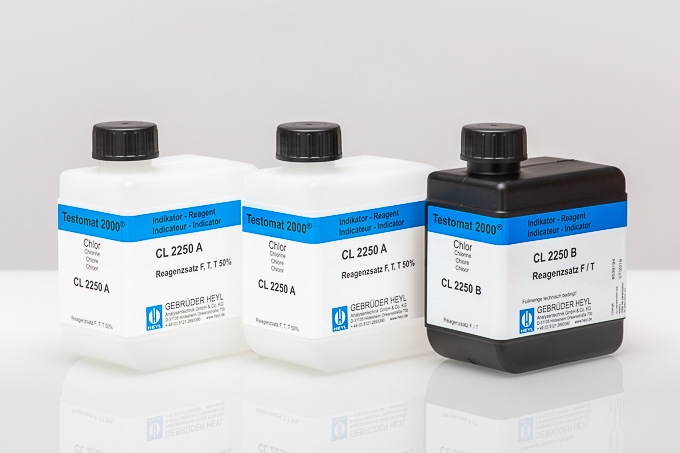Original reagents: Consumption calculator and optimization calculator
Online reagent calculation tool for original reagents made in Germany
Optimization calculator for original reagents
Online tool for calculating reagent consumption and optimizing consumption based on:
- Measurement parameters
- Automatic assignment of the device type
For the following measurement parameters:
- Bromine
- Chlorine dioxide
- Chromium VI
- Iron
- Total chlorine
- Polymer
- Silicate SiO2
- Sulfite
- Free chlorine
- Ortho phosphate
Online calculation based on limit values and envelope points in different measuring ranges

Once the result has been displayed, you can order or subscribe to the respective indicator directly via the link provided in the online store.
FAQ on the correct use of the online reagent consumption calculator
Why is it necessary to select a device?
Different device versions are available for measuring the available parameters. This is due to the different specific wavelengths required for the photometric analysis to measure the selected parameter.
Why is it not necessary to specify a limit value to be monitored?
The analysis of the so-called non-hardness parameters is based on standardized DIN methods. A fixed amount of reagent is always added to each of these methods. The limit value to be monitored therefore has no influence on the consumption of the reagents.
What is the meaning of "interval"?
The interval is the time between the end of the first analysis and the start of the following analysis. This interval is required for the calculation of reagent consumption. It is also used to ensure that the reagent consumption is within the guaranteed shelf life of the respective reagent set. If the selected interval results in reagents remaining at the end of the shelf life, an optimized analysis interval is suggested. This is calculated so that the reagents are completely used up at the end of the shelf life.
What are the effects of changing the interval?
The shorter the interval (distance between two analyses), the higher the annual reagent consumption. Conversely, the longer the interval is selected, the less reagent is required per year. The interval should always be selected to suit the monitoring task.
Which intervals can be selected?
All time intervals can be entered in the consumption calculator. All Testomats have an external start or start/stop input.
If this is not used, the devices work with the following maximum intervals, which can be programmed on the device itself:
- Testomat 2000: Br2, CLF/CLT, ClO2, CrVI, FE and SO3: max. 99 minutes
- Testomat 2000: PO4 and polymer: max. 255 minutes
- Testomat 808 – SiO2: max. 480 minutes
Why is it necessary to specify the hours and days per year?
The usage time of the appliances per day or per year directly influences the indicator consumption. In order to take your actual requirements into account as much as possible, this value is included in our calculation.
Why are two variants sometimes displayed?
In some cases, in addition to the standard containers (500 ml), large containers for the non-hardness parameters are also available for the Testomat. In such cases, consumption is calculated for both container sizes. A separate calculation is shown for each container size (standard and large containers).
What does the message "You can shorten the interval from X to Y ..." mean?
The calculator calculates the expected annual consumption based on your entries. This is compared with the shelf life of the respective reagent set. If the analysis interval you have selected would result in residual quantities remaining in the container at the end of the shelf life, an optimized interval is suggested. This ensures that the reagent is completely used up at the end of the shelf life without incurring additional costs and at the same time increases the monitoring frequency and process reliability.